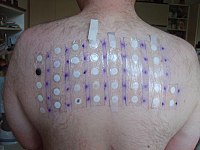
Photo from wikipedia
BACKGROUND Existing literature on the prevalence of positive reactions to allergens is largely derived from dermatologists who practice at large academic centers. Data from other providers, including allergists who practice… Click to show full abstract
BACKGROUND Existing literature on the prevalence of positive reactions to allergens is largely derived from dermatologists who practice at large academic centers. Data from other providers, including allergists who practice in various other settings, is important to assess a more representative and accurate prevalence of contact allergy. OBJECTIVE To determine the prevalence of contact allergy among individuals with at least one positive patch test result by comparing data for positive patch test reaction rates of common contact allergens from 3 groups based in different practice settings, 2 of which are academic. METHODS We retrospectively analyzed patch test results of an academic center (January 1, 2011, to December 4, 2015) and a national contact allergen database (March 1, 2015, to September 1, 2016). Data from a third, academic-based group was obtained separately from the published literature. Logistic regression analysis was used to compare positive reaction rates of the widely available, patch test allergens among the 3 groups. RESULTS The positive reaction rates for 10 of 36 compared allergens (28%) were significantly higher (p < 0.05) for the national contact allergen database compared with both the academic groups. CONCLUSION Positive reaction rates to common allergens used in patch testing may be underreported in the literature. Limitations of our study included the retrospective nature of the study, different date ranges among the three groups, and the absence of all allergens tested by the national contact allergen database.
Journal Title: Allergy and asthma proceedings
Year Published: 2018
Link to full text (if available)
Share on Social Media: Sign Up to like & get
recommendations!